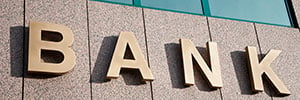Fake Money: How to Spot It and Report It
Any time you accept cash, look for signs that it might be counterfeit, such as textural differences and missing security features. Fake money could feel too smooth, or you may not see the proper watermarks or security strip when you inspect it closely.
Taking a good look at a bill before you accept it could save you money, as you’re not likely to be reimbursed by your bank or the government if you’re given counterfeit bills. If you suspect you’ve received counterfeit fake money, report it to the authorities immediately and follow proper procedures to handle the bill safely.
Learn how to spot fake bills and turn over counterfeit money to the authorities.
How to tell if money is fake
Real dollar bills have a distinctive look and feel, so you can use your senses to detect counterfeit bills.
Feeling a bill’s texture is one of the easiest ways to spot fake money. U.S. currency is made of a cotton-linen blend. It feels slightly rough compared with counterfeit bills, which are usually made of smoother paper. Additionally, real U.S. currency has features such as embedded security threads, watermarks and color-shifting ink.
You can use these features to determine whether a bill is real:
- Feel for a slightly rough touch from the cotton-linen blend.
- Look for randomly dispersed red and blue fibers in the paper.
- Look for security threads (plastic strips) embedded vertically on bills that are $5 and higher. These threads are visible under UV light and have details inscribed, such as the bill’s denomination, or in some cases, small flags. Counterfeit money may be missing the threads or have poorly replicated threads.
- On bills $5 and higher, find the watermark to the right of the bill’s portrait (a numeral 5 on $5 bills and the image of presidents on higher denominations) and look for tiny microprints in various places.
- On bills $10 and higher, look for color-shifting ink on the bottom-right number that changes from copper to green as you move the bill.
- On $50 bills, look for the security thread, which should say the words “USA 50” and glow yellow under UV light. When held up to light, it should have a watermark of President Ulysses S. Grant. It may have a small flag, depending on the year it was printed.
- On $100 bills, the security thread should show images of bells and the words “USA 100” that move when the bill is tilted. When held up to the light, there should be a watermark of Benjamin Franklin and a green bell that changes to copper when the bill is moved.
It’s important to know the particular security features of the bigger denominations because a common way of creating fake money is to bleach smaller bills and then reprint the paper with an image of a larger denomination. If you get a $100 bill that feels like real money but doesn’t have a color-changing bell in an inkwell, it may be a $1 bill dressed up to look 100 times as valuable.
If you’re not sure a bill is genuine U.S. currency, you can check the U.S. Currency Education Program, which provides photos and features of all denominations.
What do I do with fake money?
If you’ve received fake money, you should report it to the authorities. If possible, avoid returning it to the person who gave it to you. As soon as you can, record notes about the person you received it from, including what they look like and other identifying information, such as their name or license plate number. Write your initials and the date on the white edge of the suspicious bill and keep it protected in an envelope or plastic bag.
Suspected counterfeit bills should be submitted to the United States Secret Service. Your local police department or bank can help you submit suspicious bills to the Secret Service, or you can contact your local Secret Service field office.
You can bring the suspicious bill to the authorities in person or arrange to mail it in. Visiting a bank may help you determine whether the bill is counterfeit, as staff members are likely trained to spot counterfeit currency.
Will my bank replace fake money?
Don’t count on your bank to replace fake money. Banks can, at their discretion, replace fake money received by their customers, but they are unlikely to do so. If the fake money came from a bank ATM, you have a good argument for replacement, though the bank may claim that you received the money from somewhere else.
Unfortunately, the government most likely won’t reimburse you for fake bills. However, your insurance company may offer relief. Some homeowners or renters insurance policies may allow you to claim counterfeit money. If you have insurance, check with your carrier if you strike out at the bank.
 5 Easiest Bank Accounts to Open Online
5 Easiest Bank Accounts to Open Online What Is Bank Fraud? How to Recognize It, Avoid It and Report It
What Is Bank Fraud? How to Recognize It, Avoid It and Report It How to Open a Bank Account for a Minor
How to Open a Bank Account for a Minor How to Balance a Checkbook
How to Balance a Checkbook